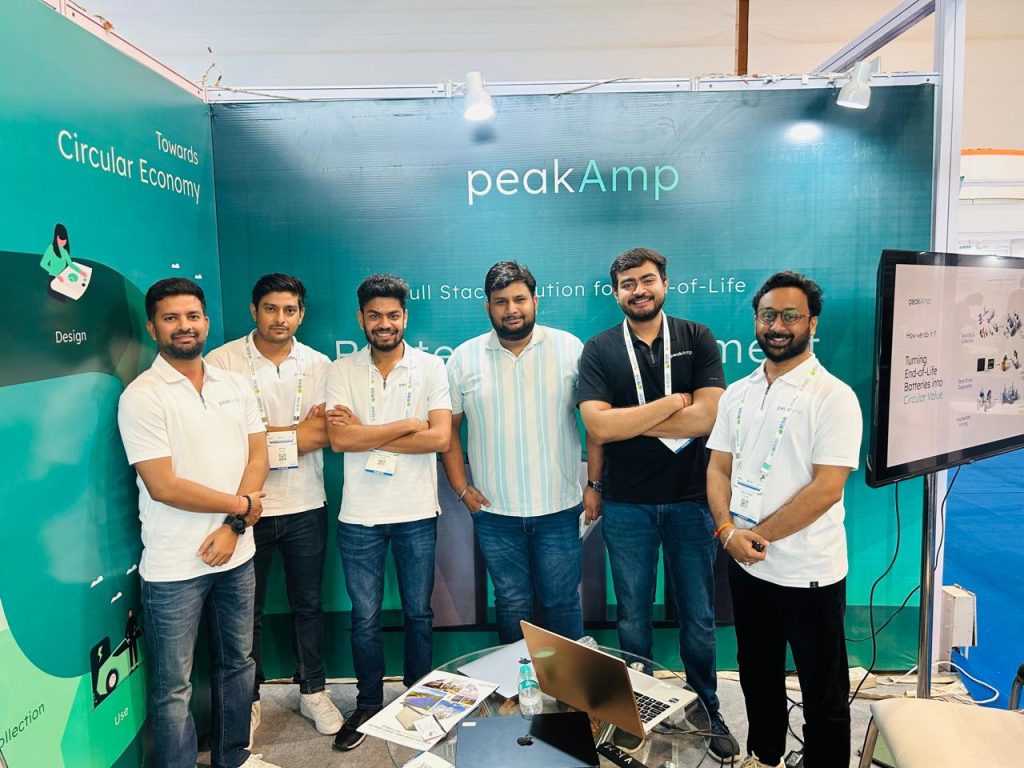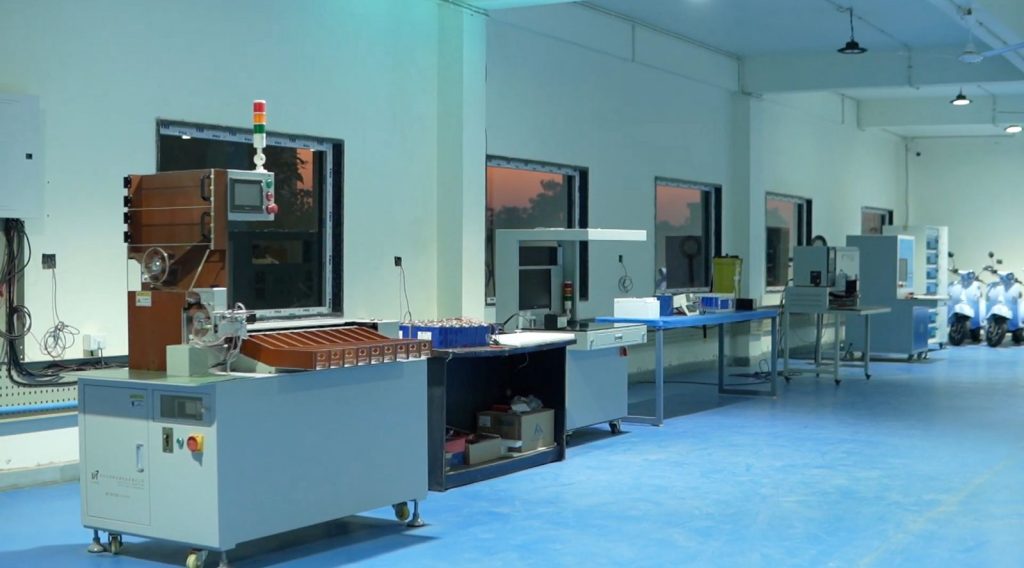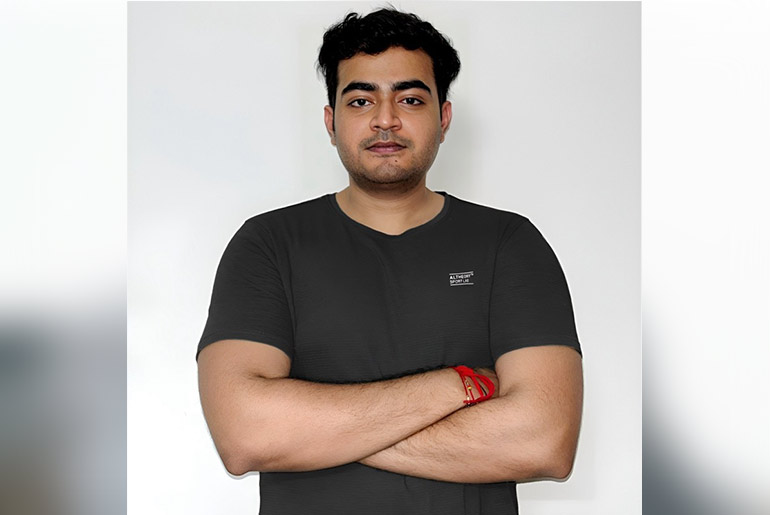As India’s clean energy ambitions surge, so does an urgent question—what becomes of the growing mountain of spent batteries? While EVs and energy storage solutions dominate headlines, the end-of-life battery landscape remains fragmented, complex, and critically under-addressed. At the forefront of rewriting this story is peakAmp, a company redefining battery recycling through a full-stack model that spans collection, processing, compliance, and intelligent digital integration. Spearheading this vision is Aditya Sudhanshu, Chief Operating Officer of peakAmp, who brings deep operational insight and a bold systems approach to solving one of energy transition’s biggest blind spots.
Shweta Kumari, Sub-Editor of The Battery Magazine, caught up with Aditya Sudhanshu for an in-depth conversation on PeakAmp’s evolving capabilities—from high-efficiency material recovery and low-CAPEX tech partnerships to the promise of second-life applications and a future-ready digital battery passport system.
Let’s dive into the future of battery waste—where every dead cell holds untapped potential, and circularity meets intelligence.
Could you briefly introduce Peak AMP’s vision in transforming end-of-life battery management through your full-stack recycling and logistics ecosystem?
At peakAmp, we position ourselves as a full-stack solution provider for end-of-life battery management. This space involves multiple layers and a variety of stakeholders — from OEMs that manufacture batteries to R4 recyclers who handle processing, involving chemical treatments.
Our approach revolves around three primary pillars. The first is collection. We’re developing a reverse logistics network using a hub-and-spoke model. In this setup, regional hubs (warehouses) allow us to aggregate even small quantities of batteries from local dealers. We then optimize the supply chain to make transportation and logistics highly cost-effective.
The second is processing. We operate on a capex-light model. Instead of building heavy infrastructure ourselves, we collaborate with recyclers either through exclusive procurement partnerships or joint ventures. These arrangements often give us access to proprietary recycling technologies or patents, providing a level of exclusivity and efficiency in our operations.
The third pillar is compliance. Under the Battery Waste Management Rules (BWMR), Extended Producer Responsibility (EPR) compliance falls on the OEMs. We support them by offering integrated solutions that address these regulatory needs. We’re also in the process of developing a digital platform to streamline and automate operations across all these verticals.
PeakAmp advertises a material recovery rate exceeding 98% and aims to process over 600 MWh annually. What specific recycling technologies or innovations enable this level of efficiency?
While some aspects of our recycling process are proprietary, I can share that we currently use a gravity-based seperation technique in our mechanical plant, which is already operational. This facility is capable of handling 300 tons of battery input per month, and we extract high-purity materials, primarily copper and aluminum, with a recovery rate exceeding 98%.
The process doesn’t require any chemical infusion. It involves a series of stages—starting with a crusher, followed by a pulverizer, and then a final stage I can’t disclose in detail due to confidentiality. The output at this stage is black mass — a concentrated powder containing valuable metals.
We’re now in the process of setting up a chemical processing facility, where the black mass from our mechanical plant will be used as feedstock. From this, we’ll extract lithium, cobalt, and nickel salts, further increasing the circular value of our ecosystem.
Your approach highlights advanced supply chain and collection strategies. How do you ensure safe, compliant, and cost-effective logistics from OEMs and recyclers?
A key part of our logistics strategy is identifying high-, medium-, and low-volume collection zones across India. Cities like Delhi NCR and Bengaluru are major hubs for EV activity — they’ve had early adoption since around 2018. Understanding the demand dynamics in these regions has helped us streamline operations.
For larger battery volumes — say, five or ten tons from a collection point — we directly ship them to our recycling or battery testing facilities for State of Health (SoH) evaluation or immediate processing. For smaller volumes, we aggregate them through local hubs before transporting.
Regarding safety and compliance, we strictly follow government-mandated transport protocols. For example, when handling cells, the terminals must be sealed. We use specific types of packaging — such as certified boxes — based on the type of battery: cells, modules, or packs. These protocols ensure regulatory compliance and prevent safety incidents during transit.

Data-driven battery analytics seem to be a core offering. What lifecycle insights do you provide to partners, and how do these analytics improve circular economy outcomes?
The battery scrap market is currently one of the most unorganized sectors, both in India and globally. A key challenge is assessing the true value of used batteries, especially when dealing with open-market purchases.
Our data-driven approach helps us evaluate every battery pack we collect. We focus on two critical insights: SoH analysis — to determine if a battery is reusable, refurbishable, or recyclable — and the material recovery value, which helps us forecast how much we can extract from it.
We’re currently developing a full-stack digital product that incorporates smart tools for battery diagnostics, pricing, and traceability. Though it’s still in development, we aim to roll it out in the next quarter or two. This platform will bring transparency, efficiency, and scalability to what has historically been a highly fragmented market.
As your volume grows, how are you scaling capacity — both in terms of physical infrastructure and new recycling chemistries like black mass refinement or hydrometallurgy?
We’re scaling on two fronts. First, the existing black mass facility currently handles 300 tons per month. This can be scaled up to 1,200 tons per month within the same physical footprint — about 20,000 square feet. Right now, only a portion of the facility is in use; the rest is storage. As we scale, additional machines can be added seamlessly to increase throughput.
Second, on the chemical processing side, we’re setting up a facility to extract valuable metals from black mass. This is happening under a joint venture (JV) model, which aligns well with our capex-light strategy. We also have exclusive partnerships with other co-processors across India. These alliances allow us to operate as a procurement and sales enabler for other recyclers while deepening our access to technology and processing capabilities.
Looking ahead, what is peak Amp’s long-term roadmap — especially in areas like second-life applications, international licensing, or battery component manufacturing?
We’ve already started exploring second-life applications. Our facility in Bhopal is focused on testing and repurposing recovered cells for small-scale energy utilities — especially in agricultural and rural contexts.
Right now, many of the cells we receive for second-life use aren’t in the best condition. This is partly because some were already in their second life when imported to India — primarily from China. Still, the opportunity is massive. From agri-tech to stationary energy storage, there are countless use cases that can benefit from safe, repurposed battery cells.

Long-term, our ambition is to evolve into a battery-grade material company — manufacturing or processing materials that go directly into new battery production. This includes working with black mass not just for recovery, but for refining and supplying critical elements like lithium and cobalt to battery manufacturers. That’s the vision driving us forward.



